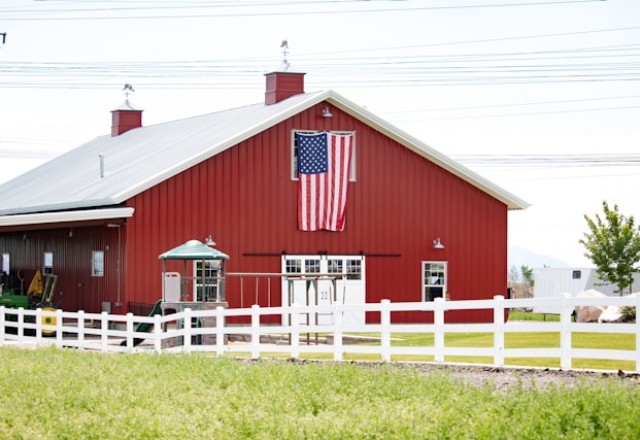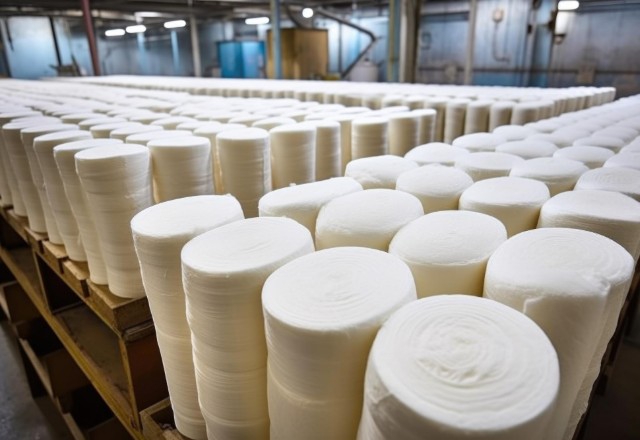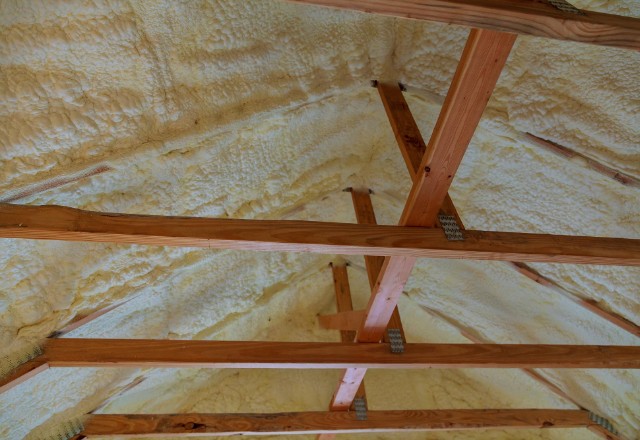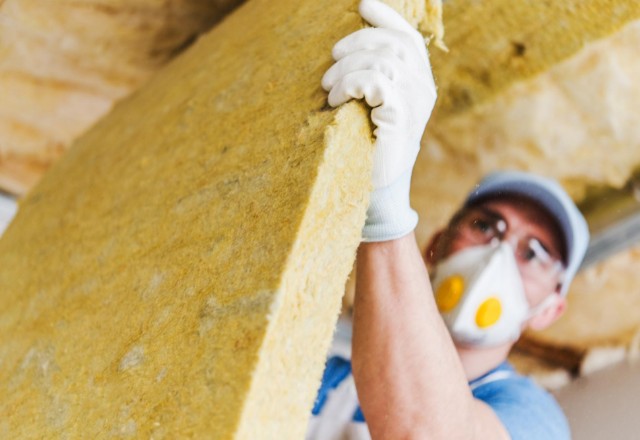Wondering how to keep your pole barn cozy during chilly weather? Pole barn insulation is the key! With proper insulation, you can maintain a comfortable temperature inside, no matter what’s happening outside. Say goodbye to freezing drafts and hello to a snug space that’s just right for work or play. But where do you start? What type of insulation works best for pole barns? Join us as we unravel the mysteries of pole barn insulation and discover how easy it is to create a warm retreat in your structure.

Importance of Pole Barn Insulation
Prevent Cold
Insulating your pole barn with insulation is crucial to keep cold air out. Proper insulation prevents drafts, making the interior warmer in colder months. By acting as a barrier against outside temperatures, insulation stops cold air from infiltrating the space. For example, without adequate insulation, frigid winter air can seep through cracks and gaps in the walls or roof.
A well-insulated pole barn helps maintain a consistent temperature inside and reduces condensation buildup. By minimizing temperature differences between indoor and outdoor environments, proper insulation controls condensation formation on surfaces within the structure. Without sufficient insulation, warm indoor air can meet cool surfaces like metal roofing or siding, leading to moisture accumulation that promotes mold growth.
Stop Condensation
Insulation plays a vital role in regulating indoor temperatures by reducing heat transfer within a pole barn structure. Properly insulated buildings experience fewer issues related to excessive heat or energy consumption due to poor thermal regulation. The creation of a thermal barrier by insulation ensures minimal heat loss or gain, maintaining a comfortable environment inside the pole barn even during extreme weather conditions.
Reducing heat-related problems such as overheating or high energy bills is achievable through effective insulation installation in pole barns. Insulating materials like fiberglass batts or foam boards help create an efficient envelope around the building that traps desired temperatures indoors while keeping external elements at bay.
Types of Insulation Suitable For Pole Barns
Fiberglass
Fiberglass insulation is a common choice for pole barns because it’s cost-effective and efficient. It is crafted from tiny glass fibers, offering good thermal performance. This type of insulation comes in various forms like batts, rolls, or loose-fill, catering to different installation requirements. Fiberglass insulation provides an affordable option with decent insulating properties.
When considering pole barn insulation, fiberglass stands out for its versatility and effectiveness. Its affordability makes it a popular choice among pole barn owners looking to regulate indoor temperatures without breaking the bank. The flexibility in form allows for easy customization during installation based on specific needs.

Foam Board
Foam board insulation is another suitable option for pole barns due to its exceptional thermal resistance and moisture control capabilities. This rigid type of insulation comes in panels or sheets that are easily installed on walls or roofs. Offering high R-values, foam board effectively minimizes heat transfer within pole barn structures by providing a solid barrier against temperature fluctuations.
For those seeking reliable insulation solutions for their pole barns, foam board presents itself as a robust contender due to its ability to maintain consistent indoor temperatures while controlling moisture levels effectively.
Spray Foam
Spray foam insulation offers superior coverage and air sealing features ideal for pole barn applications. When applied, this type of insulation expands significantly, filling gaps and crevices efficiently to maximize energy efficiency within the structure. By adhering seamlessly to surfaces upon application, spray foam creates an impermeable barrier against heat loss and air infiltration.
In the realm of pole barn construction, spray foam emerges as a top-notch choice for those prioritizing comprehensive coverage alongside effective sealing properties that ensure optimal thermal regulation throughout all seasons.

Choosing Insulation for Your Pole Barn
R-Value Selection
When insulating your pole barn, the R-value of the insulation is crucial. The higher the R-value, the better the insulation’s ability to resist heat flow. Consider factors like your region’s climate and how you plan to use your pole barn when selecting an appropriate R-value. For instance, if you live in a cold climate, you may need insulation with a higher R-value to keep the interior warm.
Insulation materials with high R-values are effective at maintaining consistent indoor temperatures by reducing heat transfer through walls and ceilings. By choosing the right R-value, you can ensure that your pole barn remains comfortable year-round while keeping energy costs in check.
Moisture Control
Proper insulation not only helps regulate temperature but also controls moisture levels within your pole barn. Opting for insulation materials with moisture-resistant properties can prevent mold or mildew growth caused by excess humidity or condensation inside the structure. By minimizing moisture buildup, these materials contribute to a healthier indoor environment overall.
Moisture control is essential for preserving both the structural integrity of your pole barn and its contents. With adequate insulation that effectively manages moisture levels, you can avoid potential damage from water-related issues over time.
Energy Efficiency
Insulating your pole barn plays a significant role in enhancing energy efficiency on multiple fronts. By reducing heat loss during colder months and preventing excessive heat gain in warmer seasons, proper insulation ensures that less energy is needed for heating or cooling purposes throughout the year. This translates to lower utility bills due to reduced energy consumption.
In addition to cost savings, an energy-efficient pole barn benefits the environment by lowering carbon emissions associated with excessive energy usage. By investing in quality insulation tailored to maximize energy efficiency, you not only save money but also contribute positively towards sustainability efforts.

Insulating Barn Walls
Best Practices
Insulating barn walls effectively involves following best practices for optimal performance. Properly sealing gaps and joints is crucial to eliminate air leaks, enhancing insulation efficiency. Seeking advice from professionals or consulting industry guidelines offers valuable insights into the recommended methods for pole barn insulation installation. By adhering to these best practices, you ensure that your pole barn is well-insulated and energy-efficient.
When insulating your pole barn, consider various material options available in the market such as fiberglass, foam board, and spray foam. Each type of insulation material comes with its own set of advantages, costs considerations, ease of installation factors, and thermal performance characteristics. Understanding the differences between these materials helps you make an informed decision based on your specific needs and budget constraints. For instance, fiberglass insulation may be cost-effective but might require more effort during installation compared to spray foam which provides excellent thermal resistance.
Material Options
Fiberglass: Cost-effective option requiring careful handling during installation.
Foam Board: Offers good thermal performance but may have higher upfront costs.
Spray Foam: Provides superior thermal resistance but can be pricier than other options.
Barn Ceiling Insulation
Types of Insulation
Insulating the barn ceiling is crucial for maintaining a comfortable temperature inside. Two common types are blown insulation and bubble insulation. Blown insulation fills spaces effectively, while bubble insulation acts as a radiant barrier.
Blown insulation, made of materials like fiberglass or cellulose, can be blown into the ceiling cavities. It provides excellent coverage and helps prevent heat loss through the roof. On the other hand, bubble insulation consists of reflective foil surfaces that reflect heat away from the barn’s interior.
Best Practices for Installation
When insulating a pole barn ceiling, ensure proper installation to maximize efficiency. Start by sealing any air leaks in the attic to prevent heat transfer. Next, consider adding a vapor barrier to control moisture levels within the space.
To install blown insulation, use specialized equipment to blow it evenly across the entire ceiling area. For bubble insulation, ensure proper alignment with no gaps or overlaps during installation to maintain its effectiveness at reflecting heat away from the interior.

Ventilation Importance
Proper airflow is crucial for pole barn insulation to work effectively. Adequate ventilation helps maintain a healthy indoor environment by preventing moisture buildup. A well-designed ventilation system complements insulation, optimizing energy efficiency and air quality.
Insulation plays a vital role in controlling condensation within the pole barn. By reducing temperature differences and creating a thermal barrier, insulation helps prevent condensation on surfaces. When combined with proper ventilation, insulation can further improve condensation control measures.
Moisture and Condensation
Prevention Tips
Regularly inspecting and maintaining pole barn insulation is crucial to prevent issues like air leaks or moisture problems. Address any damaged or deteriorated insulation promptly to ensure optimal performance. Implement preventive measures such as sealing gaps or adding extra insulation layers for enhanced effectiveness.
To avoid moisture-related concerns in a pole barn, installing moisture barriers alongside insulation is recommended. These barriers offer an additional layer of protection against moisture infiltration, reducing the risk of mold and rot. Proper installation of these barriers ensures long-term durability and effective moisture control within the structure.
Moisture Barriers
Moisture barriers play a vital role in protecting pole barns from water vapor penetration, which can lead to condensation issues. By preventing water vapor from entering the building envelope, these barriers help maintain a dry environment inside the pole barn. This proactive approach significantly reduces the chances of condensation forming on surfaces within the structure.
In regions with high humidity levels, where condensation poses a significant risk, incorporating proper ventilation systems along with insulation and moisture barriers becomes even more critical. Ventilation helps regulate indoor humidity levels by allowing moist air to escape outside while bringing in drier air from outside. This cycle helps minimize condensation buildup by controlling indoor humidity effectively.
Energy-Efficient Heating
Heating Systems
Choosing the right heating system for your insulated pole barn is crucial for maintaining a comfortable temperature. Options like radiant floor heating, forced-air systems, or wood-burning stoves offer different benefits based on your needs. Factors such as energy efficiency, cost, and ease of installation play a significant role in determining the most suitable heating system.
For instance, radiant floor heating provides consistent warmth by distributing heat evenly across the entire space. On the other hand, forced-air systems quickly heat up large areas with efficient circulation of warm air. Meanwhile, wood-burning stoves offer a traditional and cozy option that can be cost-effective but require manual operation.
Properly insulating your pole barn helps in maintaining a steady temperature, ensuring occupants or stored items are shielded from extreme weather conditions. By reducing heat loss during winter and preventing excessive heat gain in summer, insulation creates an environment that remains pleasant year-round. Insulation aids in minimizing temperature fluctuations within the pole barn—a critical aspect for activities or equipment sensitive to changes in temperature.
Maintaining Temperature
Insulation not only keeps your pole barn warm during cold seasons but also helps keep it cool when temperatures rise outside. This means that regardless of external weather conditions—be it scorching summers or freezing winters—the interior of your structure stays comfortable due to proper insulation’s ability to regulate internal temperatures effectively.

Installation Considerations
Professional vs DIY
When considering pole barn insulation installation, deciding between hiring professionals or opting for a DIY project is crucial. Professionals bring expertise and specialized tools for optimal performance. On the other hand, DIY projects can be cost-effective but demand thorough research, safety adherence, and attention to detail.
Undertaking a pole barn insulation project yourself requires time investment in learning proper techniques and safety measures. While it can save money, ensuring effective insulation demands meticulous planning and execution. Hiring professionals guarantees expert handling of the installation process with minimal room for errors.
Key Installation Tips
Before starting the pole barn insulation installation process, preparing the space adequately is key to long-term effectiveness. Cleaning surfaces thoroughly ensures proper adhesion of insulation materials while sealing gaps prevents heat loss through leaks. Adequate ventilation within the pole barn helps maintain air quality post-insulation.
Following manufacturer instructions precisely during pole barn insulation installation is vital for achieving optimal results. Industry best practices guide you on how to handle different types of insulating materials effectively within your pole barn structure. Adhering to these guidelines ensures that your building remains well-insulated throughout its lifespan.

Benefits of Energy-Efficient Pole Barns
Cost-Effective Insulation
Insulating a pole barn helps regulate temperature, reducing heating and cooling costs. Proper insulation prevents heat loss in winter and keeps the interior cool during summer. Fiberglass batt insulation or spray foam are common options for insulating pole barns effectively. Fiberglass is cost-effective but may require additional vapor barriers, while spray foam provides superior insulation but can be pricier. Pole barn insulation blankets provide an alternative method that is easy to install and often more affordable than spray foam.

Pole Barn Insulation Blanket
It seems we haven't covered this option in the current article yet. But it's worth exploring.
Increased Energy Efficiency
Energy-efficient pole barns with proper insulation consume less energy for heating and cooling. This reduced energy consumption not only lowers utility bills but also minimizes the environmental impact by decreasing overall energy usage. By sealing gaps and insulating walls, ceilings, and floors adequately, pole barns maintain a consistent indoor temperature without overworking HVAC systems.
Enhanced Comfort Levels
Well-insulated pole barns offer improved comfort levels for occupants throughout the year. In cold weather, effective insulation retains warmth inside the structure, creating a cozy environment even when it’s freezing outside. During hot summers, proper insulation keeps the interior cool by blocking heat transfer from outside to inside. This ensures that individuals working or spending time in the pole barn remain comfortable regardless of external weather conditions.
Durable Construction
Insulation plays a crucial role in maintaining the structural integrity of pole barns by preventing moisture buildup and mold growth within walls or ceilings. Moisture infiltration can lead to rotting wood or corrosion of metal components over time if left unchecked. Properly insulated pole barns reduce condensation risks by creating a barrier against water vapor intrusion, preserving the building materials’ longevity.
Noise Reduction
Insulation not only regulates temperature but also acts as a sound barrier in pole barns, reducing noise transmission from outside sources such as traffic or machinery nearby. This acoustic benefit enhances the usability of pole barn structures for various purposes including workshops, storage facilities, livestock housing, or recreational spaces where noise control is essential.
Summary
You’ve now grasped the crucial aspects of insulating your pole barn effectively. From understanding the insulation types suitable for your barn to the significance of proper ventilation and combating moisture issues, you’re equipped to create an energy-efficient space. By considering installation factors and the benefits of an energy-efficient pole barn, you’re on the right path to enhancing your barn’s functionality and sustainability.
Take action now! Implement these insights into your pole barn insulation project, ensuring a well-insulated, energy-efficient space that meets your needs. Your efforts will not only save you money in the long run but also contribute to a more comfortable and environmentally friendly barn. Get started today and enjoy the rewards of a well-insulated pole barn!
Interested in Pole Barn Buildings & Insulation Projects in Spokane, WA
Call us 509-201-4190 or send the form



 509-201-4190
509-201-4190
